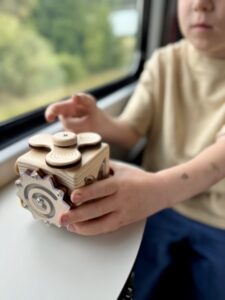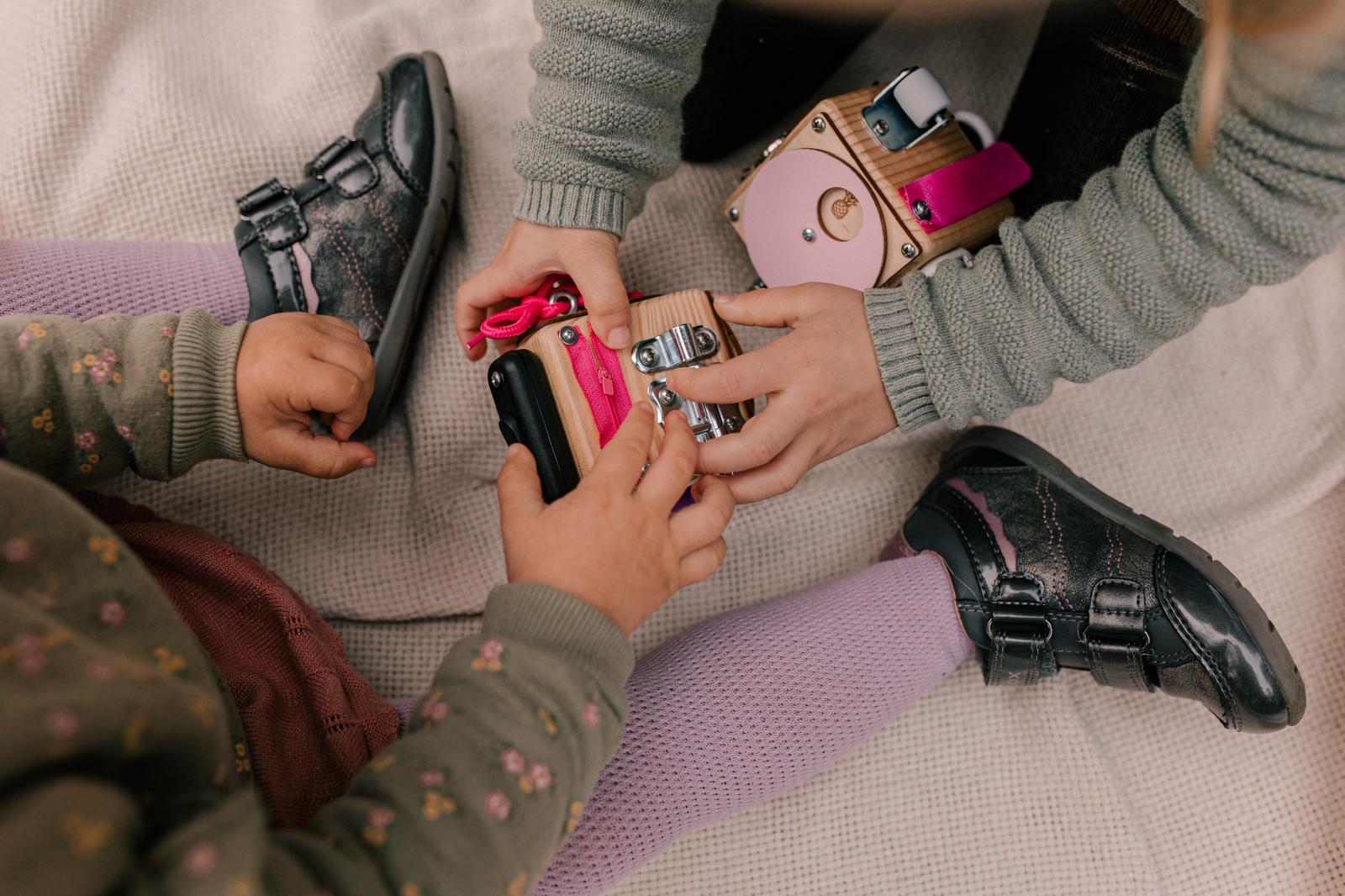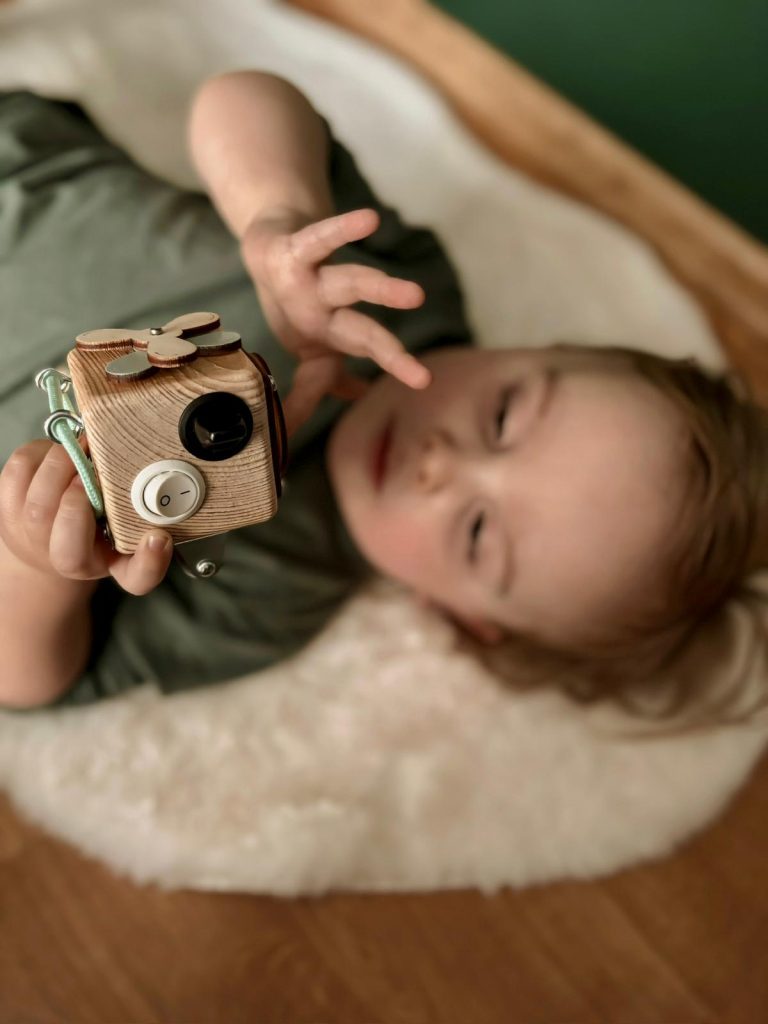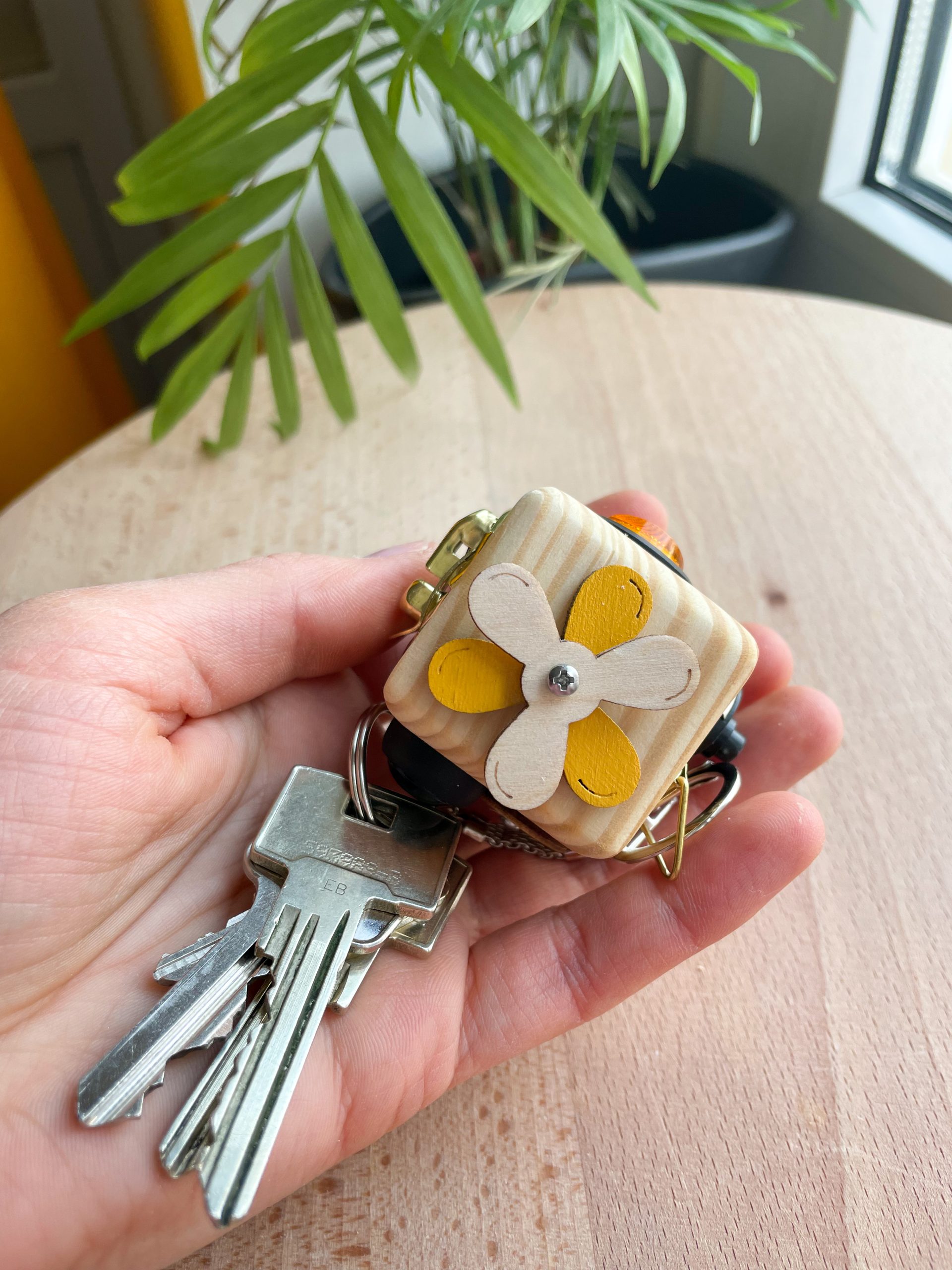
Toys for the airplane – what will occupy the child during the trip?
Traveling with a child is a challenge, especially on an airplane, where space is limited

Toys can play a significant role in the process of sensory integration in children. How can toys help with SI therapy? By interacting with a variety of materials, textures and sounds, children develop their senses and perceptual skills, which has a positive impact on their emotional, cognitive and social development. In today’s article, we will look at how educational toys i sensory can support sensory integration in children, what are the most effective types of toys in this context, and what benefits can be derived from their use.
Sensory integration is the process by which the brain processes sensory information from different senses (such as touch, sight, hearing, taste and smell) and integrates them into coherent cognitive and motor experiences. Through this process, the child can effectively respond to environmental stimuli, regulate his behavior and develop cognitive and motor skills. Through proper sensory integration, children can function better in everyday life, dealing with the various situations and challenges they encounter along the way. Adequately developed sensory integration is the basis for a child’s effective functioning in social and educational environments.
Sensory integration is crucial to a child’s proper functioning, supporting the development of basic skills such as motor coordination, balance, concentration and emotional control. Children who have sensory integration difficulties may experience difficulties adapting to new situations, learning and social interactions. Abnormal sensory integration can lead to problems with concentration, over-stimulation or attention deficits, which negatively affects a child’s school achievement and overall development. Proper sensory integration therapy can provide relief and improve a child’s quality of life and functioning in various areas of life.
Educational and sensory toys and sensory toys often feature a variety of textures and materials that stimulate a child’s senses. By touching, viewing and exploring different textures, children learn to recognize and respond to a variety of sensory stimuli. By interacting with such toys, toddlers develop their cognitive and sensory abilities, improving perception and analysis of the surrounding world. In this way, playing with educational and sensory toys becomes not only a source of entertainment, but also an effective form of learning and supporting a child’s development in the early years.
Educational toys of high quality guarantee stimulation of all the child’s senses. Through a variety of sounds, colorful patterns, diverse shapes and textures, the toys spark the toddler’s interest, encouraging interaction and exploration. Children learn by experiencing the world through their senses, so toys that offer rich sensory experiences support cognitive, emotional and social development. Stimulating all the senses, good quality educational toys develop a child’s creativity, imagination and cognitive abilities. They create simultaneously enjoyable and engaging play experiences.
Interactive toys that respond to a child’s actions are a particularly effective tool in supporting sensory integration. By interacting with such toys, children learn the relationship of cause and effect, developing anticipation and planning skills. In this way, while playing, toddlers gain experience in controlling their environment and manipulating stimuli. This supports cognitive, motor and social development. Interactive toys, responding to the child’s actions, engage the child in an interactive learning process, which promotes effective skill development and has a positive effect on the child’s sensory integration.
The manipulative boards, equipped with a variety of elements to touch, move, rotate and arrange, are excellent tools for stimulating the senses and developing children’s fine motor skills. By interacting with the board, toddlers improve their manual skills, learning precise control of finger and hand movements. In addition, the exploration of a variety of textures, shapes and materials stimulates the child’s senses, promoting the development of sensory perception. The manipulative boards provide children with engaging and developmental play that simultaneously stimulates their cognitive and motor development.
Sensory toys, such as sandboxes, ball pools and cuddly toys with different textures, provide children with a variety of sensory experiences. They help them process external stimuli. By interacting with such toys, toddlers learn to recognize and respond to different textures, shapes, sounds and movements. This supports the development of their senses. Sensory toys not only provide pleasure and entertainment, but also promote exploration of the world and the development of cognitive and motor skills in children. Through this experience of different stimuli, toddlers develop their perceptual and adaptive skills.
Blocks and puzzles, which require precise manipulation and focused attention, are excellent tools for developing children’s cognitive skills, perceptiveness and concentration. While stacking blocks or solving puzzles, children practice their ability to analyze, plan and solve problems. These activities also require patience and perseverance, which is conducive to building self-discipline and self-control. Regular play with blocks and puzzles not only provides entertainment, but also supports the child’s cognitive development, preparing him for successful functioning in school and everyday life.

Interactive toys, such as interactive books and educational games, provide children with experiences, encouraging them to explore and learn through play. Thanks to interactive features, toddlers can actively participate in the game, engaging their senses and cognitive skills. These toys often have sound, light and moving elements that attract the child’s attention and stimulate sensory and cognitive development. By interacting with interactive toys, children learn new concepts. They develop logical thinking skills and shape their cognitive abilities in an engaging and attractive way.
When choosing toys for your child it is worth paying attention to his individual needs, interests and skills. Choose toys that are age and developmentally appropriate for the toddler. Look out for ones that provide stimulation of different senses, encouraging interaction and exploration. A well-chosen toy should not only be attractive to the child, but also engaging and developing. Try to choose toys that support the child’s cognitive, motor, emotional and social development, adapting them to the child’s needs and abilities. The right toys can be valuable tools in a child’s learning and development process.
Sensory integration has many benefits for the child, including improved balance, motor coordination, concentration, and emotional control. It also supports better handling of stressful and new situations. In fact, by stimulating the various senses, educational and sensory toys can support this process. By interacting with such toys, toddlers learn to respond to various sensory stimuli. This promotes sensory integration and the development of perceptual and adaptive skills. Appropriately selected toys can therefore be an important part of therapy and developmental support for children with different needs.
Additionally, for children with sensory integration difficulties, properly selected toys can be a key part of therapy and developmental support. It is important to choose toys that are tailored to the child’s needs and abilities, providing safe and enjoyable sensory stimulation. Toys should be appropriately designed to support the development of the senses and perceptual, motor and emotional skills. By interacting with such toys, children with sensory integration difficulties can gradually develop adaptive skills. They also support coping with the world around them, improving quality of life and daily functioning.
Yes, there are toys designed specifically for children with sensory integration difficulties. They are usually toys with a variety of textures, shapes and sounds that stimulate the baby’s senses and encourage interaction and exploration.
Yes, sensory toys are often used in sensory integration (SI) therapy. With a variety of sensory stimuli, toys can help a child process sensory information and develop adaptive skills.

Traveling with a child is a challenge, especially on an airplane, where space is limited

Choosing the right gift for a 2-year-old boy can be a challenge, especially when you

In today’s busy world, more and more people are looking for ways to reduce stress
| Cookie | Duration | Description |
|---|---|---|
| cookielawinfo-checkbox-analytics | This cookie is set by GDPR Cookie Consent plugin. The cookie is used to store the user consent for the cookies in the category "Analytics". | |
| cookielawinfo-checkbox-functional | The cookie is set by GDPR cookie consent to record the user consent for the cookies in the category "Functional". | |
| cookielawinfo-checkbox-necessary | This cookie is set by GDPR Cookie Consent plugin. The cookies is used to store the user consent for the cookies in the category "Necessary". | |
| cookielawinfo-checkbox-others | This cookie is set by GDPR Cookie Consent plugin. The cookie is used to store the user consent for the cookies in the category "Other. | |
| cookielawinfo-checkbox-performance | This cookie is set by GDPR Cookie Consent plugin. The cookie is used to store the user consent for the cookies in the category "Performance". | |
| viewed_cookie_policy | The cookie is set by the GDPR Cookie Consent plugin and is used to store whether or not a user has consented to the use of cookies. It does not store any personal data. |